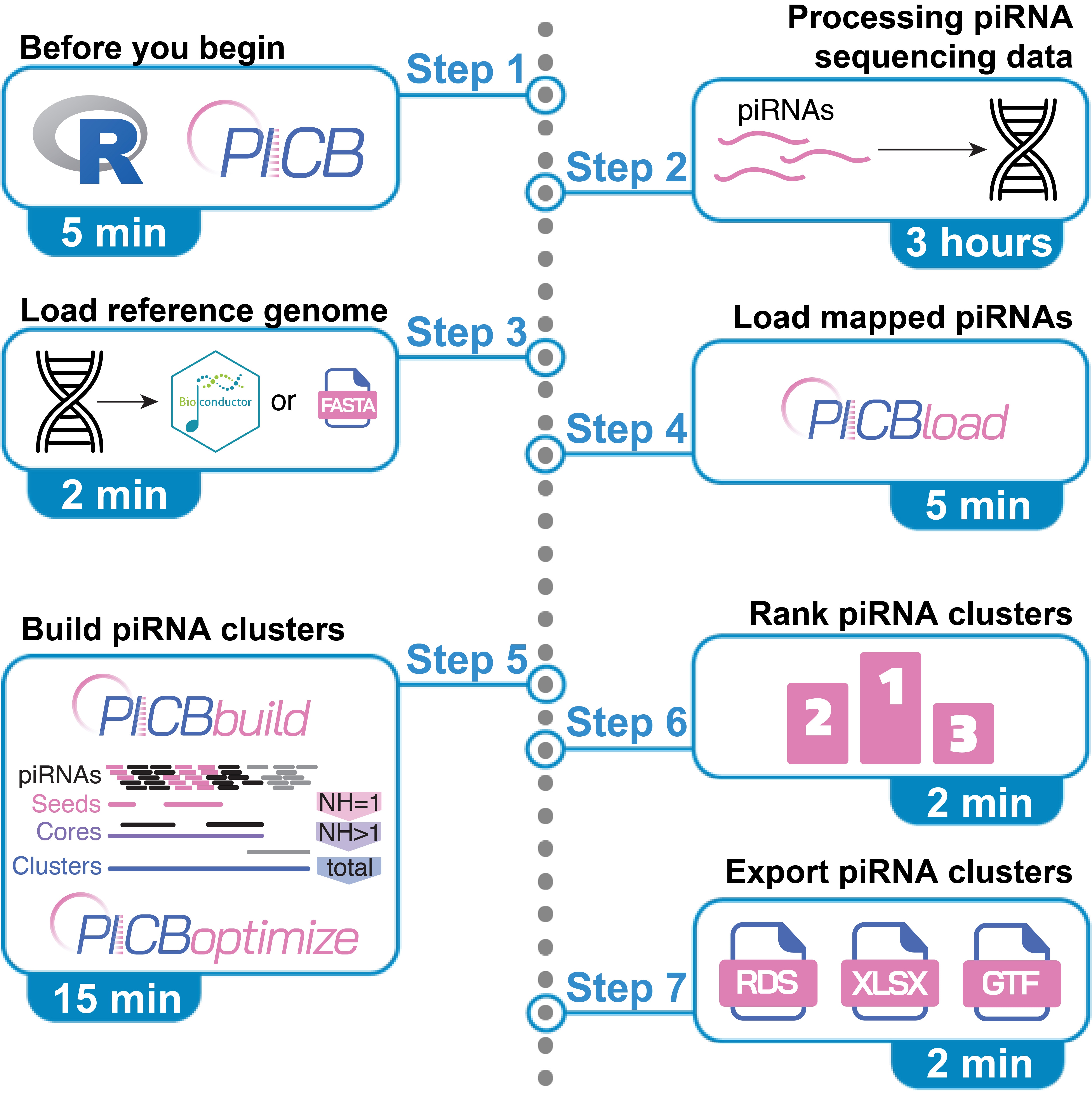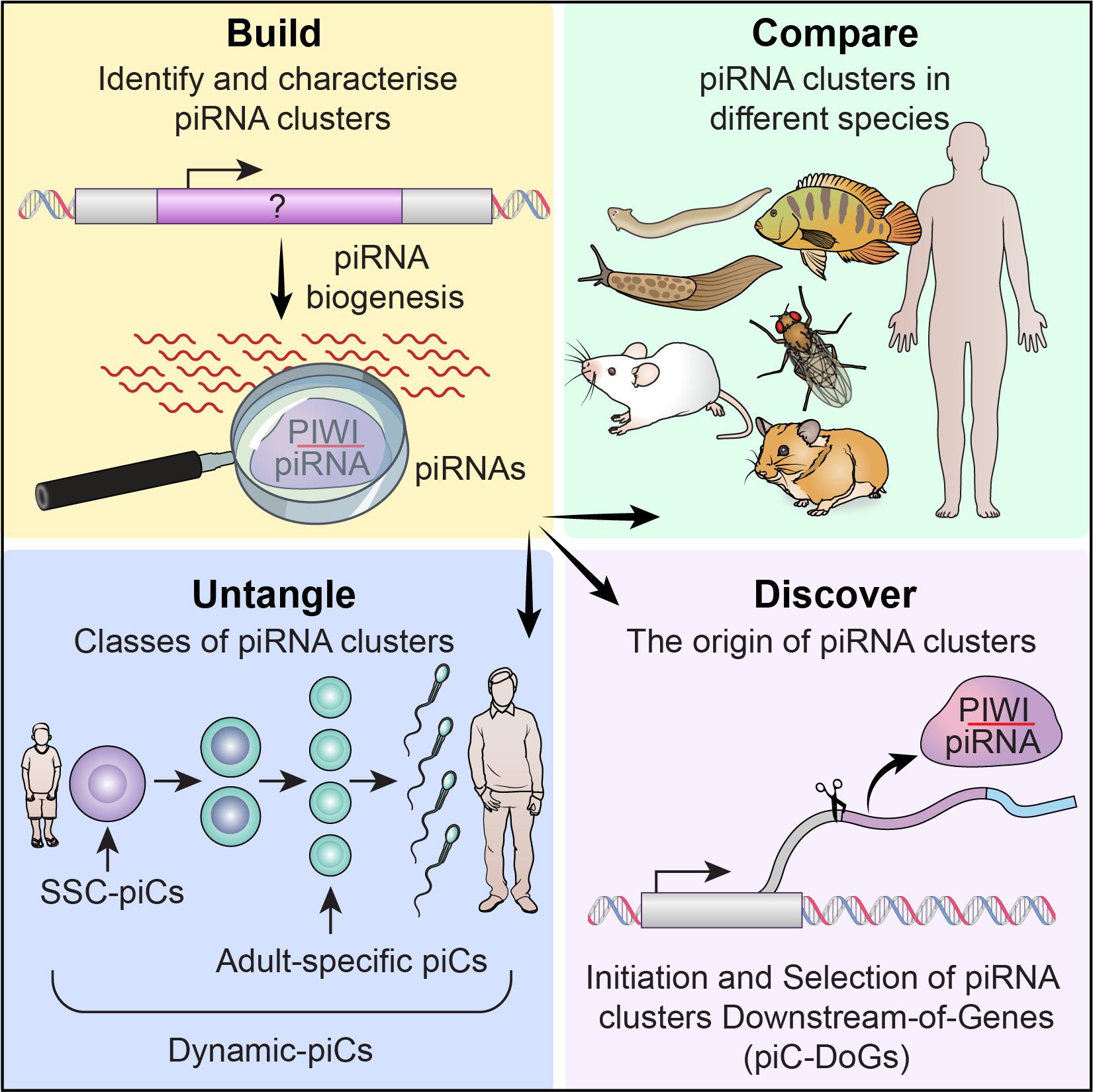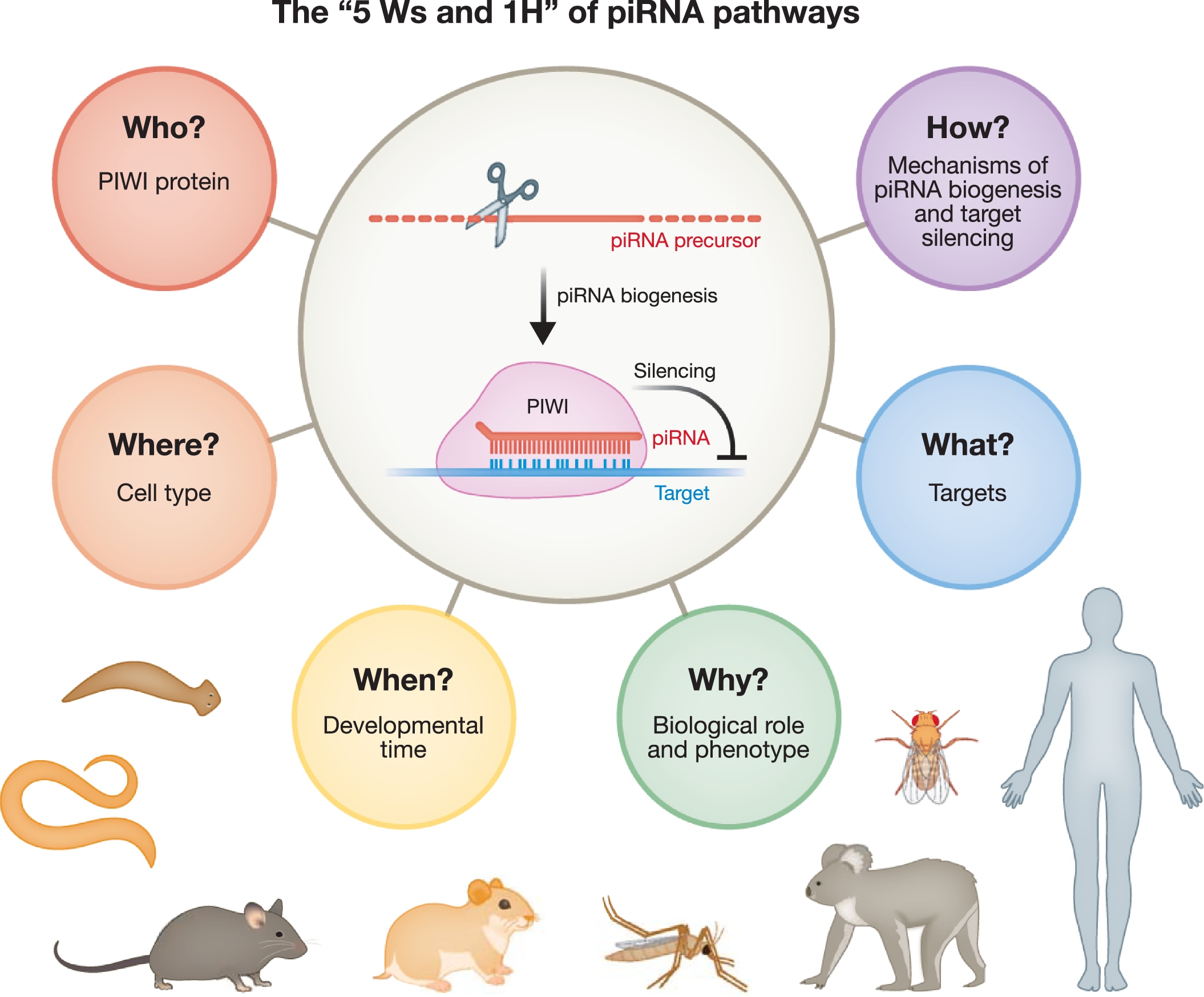RNA-guided Genome Protection: Small non-coding RNAs play vital roles in development and disease by regulating gene expression, defending against viruses, and silencing mobile genetic elements (transposons). Our research focuses on PIWI-interacting RNAs (piRNAs), which safeguard genome integrity and are essential for germ cell health and fertility.
To unravel the molecular mechanisms of this RNA-based immune system, we take an interdisciplinary approach that integrates genetics, genomics, and biochemistry. Results from our studies have deepened the understanding of the fundamental processes protecting genome integrity in animals and humans, and hold promise for uncovering molecular strategies for technological and therapeutic advancements.
Protocol for Assembling, Prioritizing, and Characterizing piRNA Clusters Using the piRNA Cluster Builder (PICB) (Ahrend et al., and Haase, STAR Protocols, in press, 2025)
A comparative roadmap of PIWI-interacting RNAs across seven species reveals insights into de novo piRNA-precursor formation in mammals (Konstantinidou*, Loubalova*, Ahrend*, Friman*, et al., and Haase, Cell Reports, 2024)
PIWI-interacting RNAs: who, what, when, where, why, and how (Haase*, Ketting*, Lai*, van Rij*, Siomi*, Svoboda*, van Wolfswinkel*, Wu*, EMBO J., 2024)
An oversimplified depiction of the three major small RNA pathways in animals.’ (Review, RNA Biology 2023)
PiRNA biogenesis in flies and mice.’ (Review, RNA Biology 2023)
Hierarchical length and sequence preferences establish a single major piRNA 3′-end’ (Stoyko et al., iScience 2022)
Functional editing of endogenous genes through rapid selection of cell pools’ (Meng*, Stoyko*, Marlin Andrews*, et al., NAR 2022; and Stoyko et al., Curr Protoc. 2022)
Cellular abundance shapes function in piRNA-guided genome defense’ (Genzor*, Konstantinidou*, Stoyko*, et al., Genome Research 2021)
Aberrant expression of select piRNA-pathway genes does not reactivate piRNA silencing in cancer cells’ (Genzor et al., PNAS 2019)
PiRNAs like to be with 'U': The 1U-bias is established by differential gating against all nucleotides but Uridine (U) (from: Stein*, Genzor*, Mitra*, Elchert* et al., Nat Commun. 2019)
Mammalian piRNA pathways (from: Genzor et al., PNAS 2019).
The structural biochemistry of Zucchini implicates it as a nuclease in piRNA biogenesis (adapted from: Ipsaro*, Haase* et al., Nature 2012).













